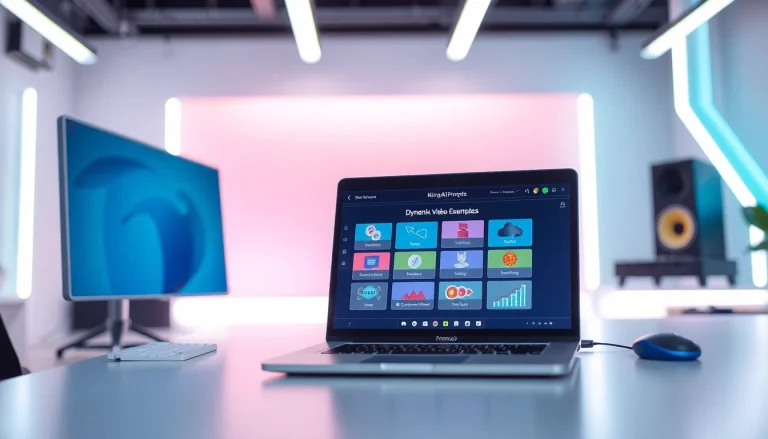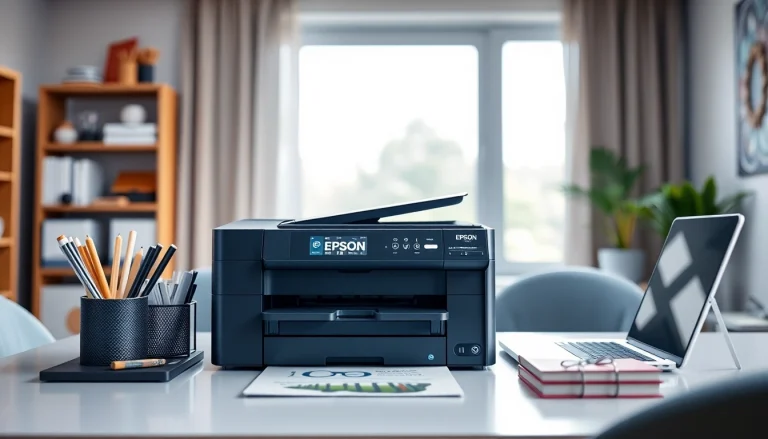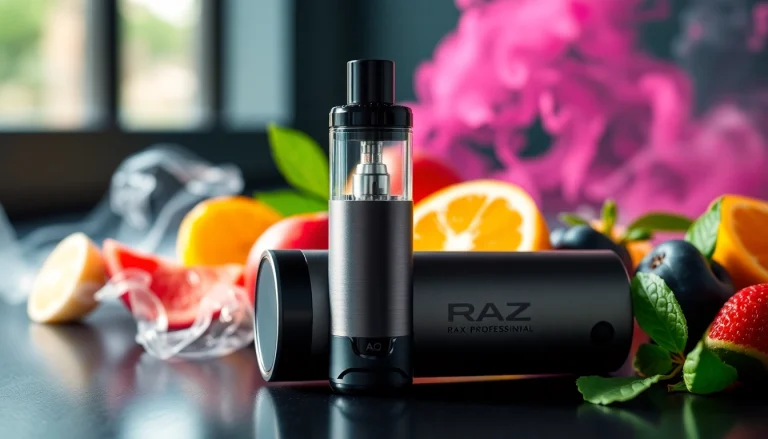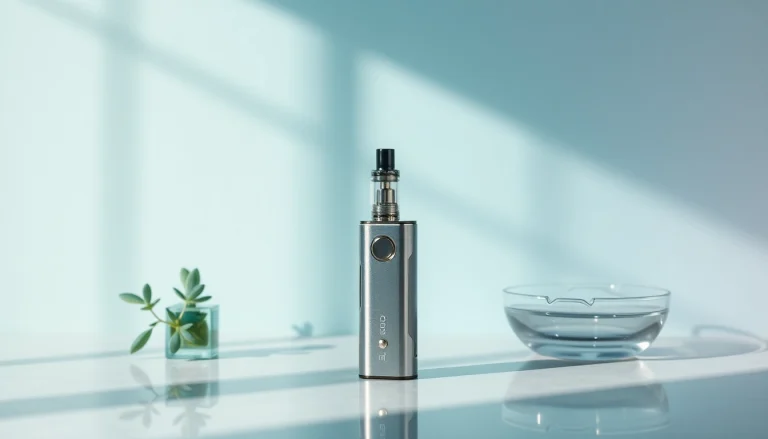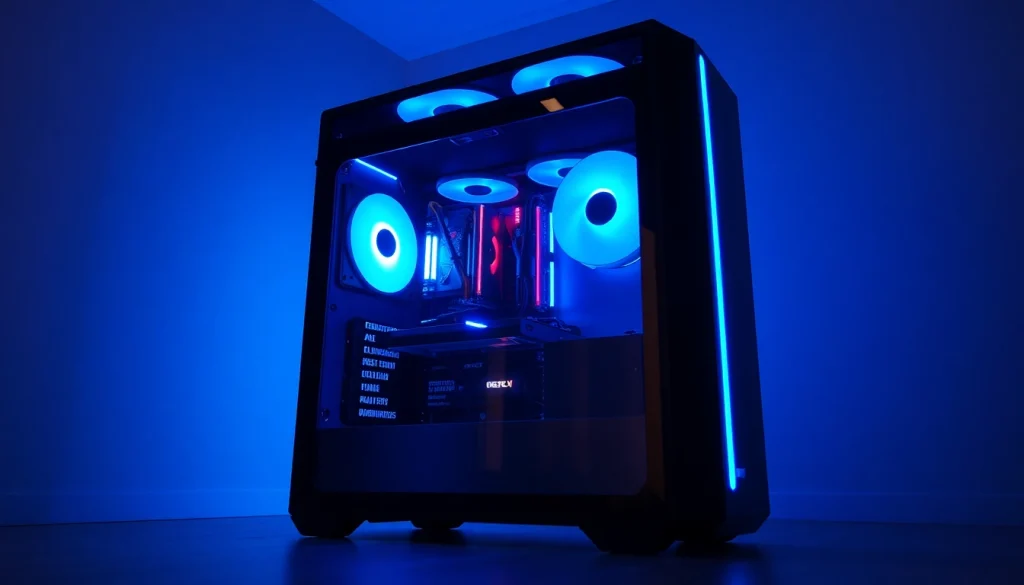
Understanding Gaming PC Cases
In the world of PC gaming, gaming pc case selection is critical. A gaming PC case serves as more than just a protective shell for your components; it is a vital factor affecting system performance, aesthetics, and future upgrades. This guide delves into the intricacies of gaming PC cases, breaking down their types, features, and considerations for making an informed purchase.
What is a Gaming PC Case?
A gaming PC case is an enclosure designed to house the components of a gaming computer, including the motherboard, CPU, GPU, RAM, storage drives, and cooling solutions. The primary purpose of a gaming PC case is to protect these components from environmental hazards such as dust, moisture, and physical damage, while also allowing for optimal airflow and temperature regulation to maintain performance during intense gaming sessions.
Modern gaming cases are designed with aesthetics in mind, often featuring RGB lighting, tempered glass panels, and various styling elements that allow gamers to showcase their builds. They come in various sizes and layouts to accommodate different components and user preferences.
Types of Gaming PC Cases
When choosing a gaming PC case, understanding the different types available is essential:
- Full Tower Cases: Ideal for high-end systems that require extensive cooling and multiple GPUs. These cases offer ample space for additional drives and components.
- Mid Tower Cases: The most popular choice among gamers, mid towers strike a balance between size, airflow, and component compatibility, making them suitable for most builds.
- Mini Tower Cases: These compact cases are designed for smaller components and are perfect for users with limited space. They typically support micro ATX motherboards.
- Small Form Factor Cases (SFF): Designed for mini ITX motherboards, SFF cases appeal to users looking for portability or specific space requirements. They can be challenging to assemble but offer unique customization options.
- Specialized Cases: Some cases incorporate unique features such as vertical mounting options or integrated water cooling solutions, catering specifically to niche markets or aesthetics.
Importance of Airflow and Cooling
Airflow is a crucial aspect of PC case design. Proper ventilation allows heated air to escape, while cooler air enters to maintain optimal temperatures for components. Good airflow can prevent thermal throttling, where components reduce their performance to avoid overheating. Here are key considerations around airflow:
- Fan Placement: Cases typically come pre-installed with fans, but the positioning of these fans—intake at the front and exhaust at the back—plays a significant role in airflow efficiency.
- Fan Compatibility: Ensure your case supports additional fans or larger radiators if planning for custom cooling solutions.
- Positive Pressure Setup: A case with more intake fans than exhaust fans can create positive pressure, reducing dust buildup inside the case.
- Filters: Dust filters can help keep the interior clean, which can prolong the life of components and improve performance.
Key Features of a Great Gaming PC Case
Choosing a gaming PC case involves several key features that can make or break your gaming experience. Consider the following when evaluating potential cases:
Size and Compatibility with Components
The size of the gaming PC case directly affects what type of components you can install. It’s essential to ensure compatibility with all of your hardware, including the motherboard form factors (ATX, micro ATX, mini ITX), GPU length, and CPU cooler height.
Before purchasing, reference the specifications of your components and compare them with the dimensions and compatibility features listed in the case’s product details.
Material Quality and Durability
Gaming PC cases are constructed from various materials, including steel, aluminum, and plastic. The material impacts the case’s overall weight, durability, and aesthetic appeal. Here are some considerations regarding material quality:
- Steel: Offers excellent durability and is often the standard for mid and full tower cases.
- Aluminum: Lighter than steel and often used in high-end models. Aluminum cases provide a premium feel and aesthetic but can be more expensive.
- Plastic Panels: Typically used in budget models, plastic panels can compromise the look and feel of a gaming build and may lack thermal efficiency.
Design and Aesthetic Considerations
The design of your gaming PC case contributes significantly to the overall aesthetics of your setup. Factors to consider include:
- Color Schemes: Choose a color that matches your existing gear or the theme you wish to create.
- Tempered Glass Panels: Many modern cases feature tempered glass side panels to display the internal components. Look for cases with easy-to-remove panels for convenient access.
- RGB Lighting: Integrated RGB lighting systems can add a dynamic touch to your build, especially when synchronized with other components.
Installing Your Gaming PC Case Components
Building a gaming PC requires careful assembly of various components. Knowing how to properly install your components within the case is crucial for optimal performance.
Essential Tools for Assembly
Before beginning your assembly, gather these essential tools:
- Phillips head screwdriver
- Anti-static wrist strap (optional but recommended)
- Cable ties for organization
- Zip ties for cable management
- Direct lighting for visibility during installation
Step-by-Step Assembly Instructions
- Prepare the Case: Remove any pre-installed components or packaging and ensure you have enough space to work.
- Install the PSU: Mount the power supply unit (PSU) in its designated spot, ensuring all cables are conveniently routed.
- Motherboard Installation: Carefully place the motherboard onto the standoffs and secure it with screws. Connect necessary power cables.
- Install Storage Drives: Mount your SSDs or HDDs into their dedicated bays or brackets, connecting to the motherboard via SATA cables.
- Graphic Card Installation: Insert the GPU into the PCIe slot and secure it with screws. Connect necessary power cables.
- Cooler Installation: If you’re using a CPU cooler, ensure it’s properly mounted, and fans are oriented correctly for airflow.
- Connect Front I/O Panel: Grab the case’s front panel connectors (USB, audio, power buttons) and connect them to the appropriate motherboard headers.
- Final Cable Management: Organize cables using zip ties. Ensure airflow is unobstructed and components are accessible for future upgrades.
Common Mistakes to Avoid
Even seasoned builders can make mistakes. Here are some common pitfalls to avoid:
- Neglecting the Manual: Always refer to the manuals of your motherboard and case for specific installation instructions.
- Forgetting Cable Management: Poorly managed cables can obstruct airflow and create a cluttered appearance—take the time to organize them effectively.
- Overlooking Cooling Configurations: Ensure fans are correctly set up for optimal airflow; reversing a fan can hinder cooling performance.
Popular Gaming PC Case Brands
Several brands dominate the gaming PC case market, known for their innovation, design, and reliability. Here we explore three major brands:
CORSAR – Innovation and Design
Corsair is recognized for its stylish designs and high-performance products. Their gaming PC cases, such as the 4000D Airflow and the iCUE 4000X, are popular for their great cooling potential and ease of builds.
Corsair cases incorporate features like cable management trays, extensive fan/microphone configurations, and tempered glass panels to cater to aesthetics and performance.
NZXT – Aesthetic Appeal
NZXT cases are known for their clean, modern look. Models like the H510 offer a compact design without compromising performance. NZXT’s building software, CAM, allows users to control RGB lighting and fan setups easily.
The focus on aesthetic appeal makes NZXT a favorite among gamers looking to showcase their internal builds without sacrificing usability or airflow.
Thermaltake – Function Meets Fashion
Thermaltake is celebrated for bringing unique and exciting designs to the market. Their cases often come with built-in RGB systems and customizable modding options. Their Core series offers endless configurability and personalization, appealing to DIY PC builders.
Thermaltake cases frequently incorporate acrylic panels and RGB elements, allowing users to create visually striking gaming setups that also function efficiently.
Making the Right Purchase Decision
With so many options available, making the right choice for a gaming PC case can be daunting. Consider these aspects before making a purchase:
Budgeting for Your Gaming PC Case
Pricing for gaming PC cases can vary significantly, ranging from budget-friendly options to high-end models. Determine your budget early on, considering not just the cost of the case but also the additional components you may need.
Keep an eye out for seasonal sales or manufacturer promotions to maximize your purchasing power.
Where to Buy Your Gaming PC Case
Gaming PC cases are readily available online and in retail stores. Popular online retailers like Amazon, Newegg, and specialized computer hardware sites offer a wide selection. Physically visiting local computer shops can provide hands-on experience and expert advice.
Future-proofing Your Build
Choose a gaming PC case that supports future upgrades. As technology advances, new components may require larger or different features. A case that allows for multiple drive bays, extra fan slots, and compatibility with newer hardware will ensure longevity in your build.
In conclusion, selecting the right gaming PC case is a multifaceted process involving size, airflow, aesthetics, and future expandability. By understanding your needs and considering the myriad elements involved, you can make an informed choice that not only boosts your gaming experience but lasts through many upgrades to come.

